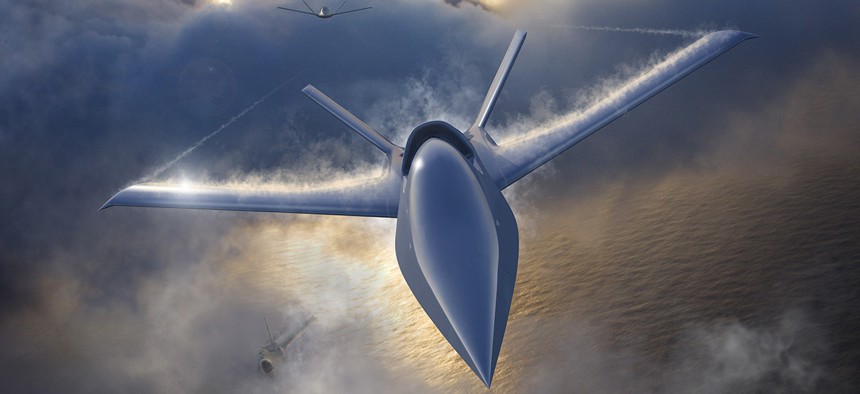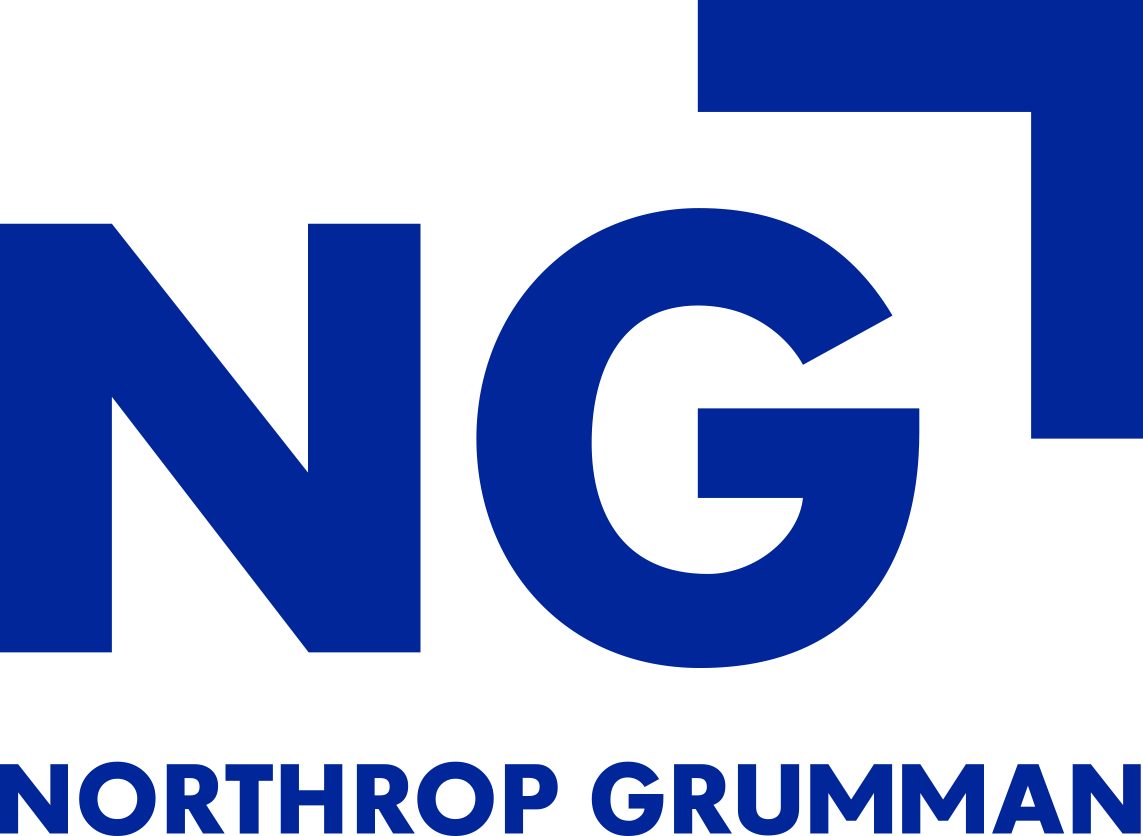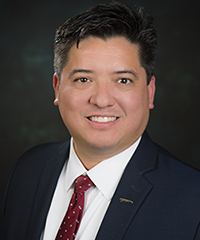sponsor content What's this?

Northrop Grumman’s new future uncrewed aircraft design configured to work networked together with crewed platforms. Image by Northrop Grumman
Transforming Military Aviation Through Autonomous Systems
As unmanned aerial vehicles (UAVs) grow increasingly complex, the goal is not to eliminate crewed assets but to create a collaborative autonomy that leverages the best of human and machine capabilities.
Presented by
Northrop Grumman

To remain on pace with near-peer competitors, the U.S. government must embrace the power of autonomous systems in transforming and enhancing military aviation’s ability to meet the mission. Advanced platforms powering multiple tiers of unmanned aircraft are capable of carrying out missions ranging from intelligence, surveillance, reconnaissance and targeting (ISR&T) to communications relay in order to support crewed assets and save lives on the battlefield.
The future of autonomous systems lies in creating a suite of crewed and uncrewed assets that optimizes the best abilities of each. The good news is that defense and aviation leaders don’t need to start from scratch when it comes to incorporating autonomous systems to greater effect: UAVs are evolving to meet a plethora of emerging needs, and industry partners like Northrop Grumman have a rich history of developing and deploying UAVs to great effect.
Now, as the U.S. military looks to the future of artificial intelligence and machine learning in defense, Northrop Grumman is continuing to advance aircraft development by supporting priority initiatives like Future Vertical Lift (FVL). In addition to technical knowledge, Northrop Grumman experts are developing a deep understanding of human oversight in autonomous systems to optimize human-machine collaboration and ensure ethical use in national security.
Game Changers in Unmanned Aircraft
By forging new paths in the development of autonomous aviation systems, Northrop Grumman is building upon a decades-long foundation of successes and lessons learned. One of the earliest unmanned aircraft in the Northrop Grumman repertoire, the Firebee, broke new ground in the field when it was first placed in service with the U.S. armed forces in the 1950s.
Descendants of the aerial target system are still in service today, even as Northrop Grumman has significantly expanded its UAV portfolio. In 2001, the company’s Global Hawk became the first unmanned, powered aircraft to cross the Pacific Ocean when it landed in Australia after a 23-hour and 20-minute trip.
As Global Hawk evolved into Triton just over a decade ago, providing superior maritime domain awareness for the Navy, Northrop Grumman was also developing the X-47B. The strike fighter-sized unmanned aircraft laid the groundwork for the autonomous aeronautic transformation that continues today.

“What’s so amazing about the X-47B is just how many ‘firsts’ it had — everything from the first carrier takeoff and landing, the first unmanned aerial refueling,” says Richard Sullivan, vice president for future programs at Northrop Grumman. “We had to generate confidence using measured data with high-fidelity system integration labs so the customers would allow us to fly something uncrewed off of their aircraft carrier. I think it was an amazing feat a decade ago.”
The accomplishment of autonomous aerial refueling (AAR), in particular, marks a major leap forward in truly optimizing the potential of unmanned surveillance, strike and reconnaissance systems, and opens new opportunities for pushing the boundaries of autonomous systems.
“The things that we've done on the Triton recently, the things that we continue to do on the RQ-4 Global Hawk, as well as what was done on the X-47B, all of those become tools in our toolbox that we can expand upon,” Sullivan says. “We've tested them, we know that they work, we've gotten feedback from the customer, it's gone through all of the experimentation and trial and error and testing to show which facets of capability are known good.”
Optimizing the Human-Machine Partnership
Through a continued commitment to revolutionizing UAVs, Northrop Grumman leverages its longtime principles of collaborative autonomy to ensure all crewed and uncrewed assets are able to perform to the best of their abilities.
“The idea of collaborative autonomy comes down to, how can you change the human-to-machine ratio?” Sullivan says. “How can you launch multiple aircraft and have one person commanding the mission … to allow the computers on the different aircraft to complete the mission based on what’s changed in the environment, as well as what the other complementary systems are doing and seeing?”
One essential solution: expanding the variety of sensors to allow autonomous systems to re-task without needing human intervention. A radio frequency system, an optical system, a battle management system — each has its unique role, and all sensors can work in unison to achieve a greater level of autonomy, as opposed to depending on humans to manage each individual aircraft and task.
“Let the computers and the autonomous systems do what they’re trusted to do, what they’re designed to do, under the constraints of what you allow them to do,” Sullivan says.
Set the task and set the limits to the task, and the autonomous system can carry it out until it reaches those limits. Though humans will always need to be in the loop in some capacity, the future of collaborative autonomy and the human-machine partnership rests on finding and pushing the limits of what machines can do to best support human endeavors.
While humans push the limits of autonomous systems, uncrewed assets are able to overcome human limitations. This includes both physical limitations — the Global Hawk offers more than one day of endurance, for example, which a human crew cannot match — as well as cost limitations. UAVs are less expensive, given their lack of human survivability equipment. They don’t need ejection seats, oxygen or cockpits with complex displays. Larger crewed assets, often expected to be jacks of all trades, could be replaced by a fleet of smaller UAVs each dedicated to specific missions.
“You can have a more resilient architecture by having your systems disaggregated,” Sullivan says. “And then you can reduce the number of mission systems that go on the crewed systems and that makes them more affordable as well.”
The Future of Unmanned Aerial Vehicles
Building on years of successes in the UAV landscape, Sullivan and his colleagues are currently engaged in innovating for FVL. Through Future Vertical Lift Maritime Strike, in particular, the U.S. Navy aims to modernize its helicopters, which include Northrop Grumman’s own MQ-8C Fire Scout UAVs. Sullivan says his team is excited to support this ambitious mission.
“Being the incumbent, we believe that with the operational things we’ve done with the Fire Scout over the last 20 years, we understand what it needs to live on in the maritime environment on a surface combatant, we understand the missions that it does, and how the MQ-8C collaborates with other helicopters,” Sullivan says. “We are the only one that currently has a deployed, operational autonomous helicopter system for the Navy.”
FVL embodies the future of UAVs, and Northrop Grumman is ready to iterate on its accomplishments with the Fire Scout. A successor of the Fire Scout could continue to support both surface combatants and manned helicopters, while offering the enhanced flexibility of a vertical takeoff system — zero runway required.
“We're investing in the Fire Scout today to be the bridge so that we understand what are the missions that are most valuable?” Sullivan says. “We want to test the limits, and we're able to do this on our own Fire Scout and help lay the groundwork for Future Vertical Lift Maritime Strike.”
In conjunction with efforts to support U.S. armed forces, Sullivan says Northrop Grumman is fostering collaboration on the international stage, supporting key allies while also respecting their in-country prosperity agendas. Allies may be committed to producing certain assets within their own countries, but Northrop Grumman’s digital engineering and architecture enables customizability. International users can plug in their own radar, for example, to meet their specific requirements.
“What we see as the focus of not only our domestic customer, but also our international customer — the future is autonomous systems,” Sullivan says. “Not eliminating crewed systems, but I think that many of the things we see today with an aircrew on board are going to be done with an autonomous system. Because it can, because it's safe and because you can trust it.”
Learn more about how Northrop Grumman is leading development in autonomous systems.
This content is made possible by our sponsor, Northrop Grumman. The editorial staff of DefenseOne was not involved in its preparation.
NEXT STORY: For a Ready and Resilient Military, Focus on Warfighter Total Health



